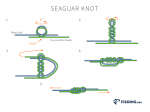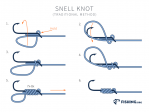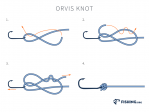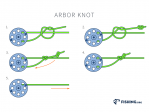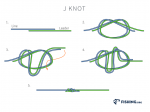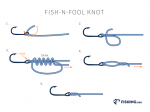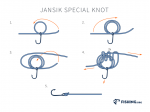Right Angle Rig

Tying Right Angle Rig Knots
Right angle rigs offer a number of advantages over traditional indicator rigs. This is part of the reason for their popularity with the fishing community. These rigs offer up variable strike detection, sink rates, and cast-ability. A right angle rig setup generally uses tungsten beads, rather than lead as a counterweight. Mainly because lead sinks faster is smaller, and heavier. Using a shorter leader will improve casting, while a short tippet is useful as it transmits and strikes faster.
One additional benefit is right angle rigs has a break off, if your line gets hung up on rocks, you will get most of your tippet back. Right angle rig users have less worries about losing and replacing expensive tungsten beads due to this. Try using a right angle rig this season and see if it doesn't improve your fishing trip experience.
Standard right angle rigs have several component parts. Such rigs consist of a fly line, braided loop, uni knots, a mono, tungsten beads, tippet, swivel , fluorocarbon,
and a Thingamabobber. It is a simple, yet variable design that has caught the eye of many fishers in a variety of casting environments.
Step 2:
Step 3:
 Joshua Keaton
Joshua Keaton 

